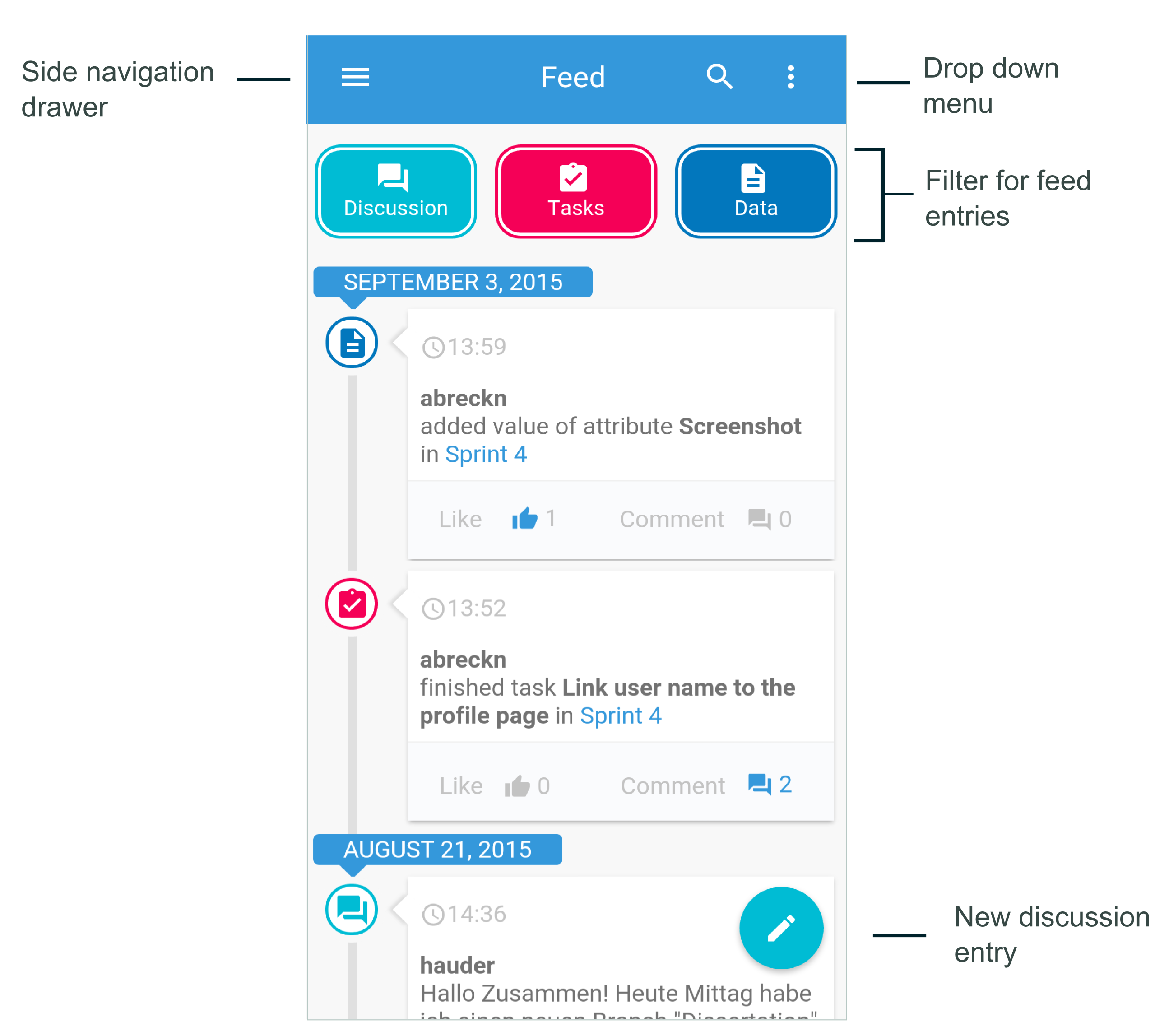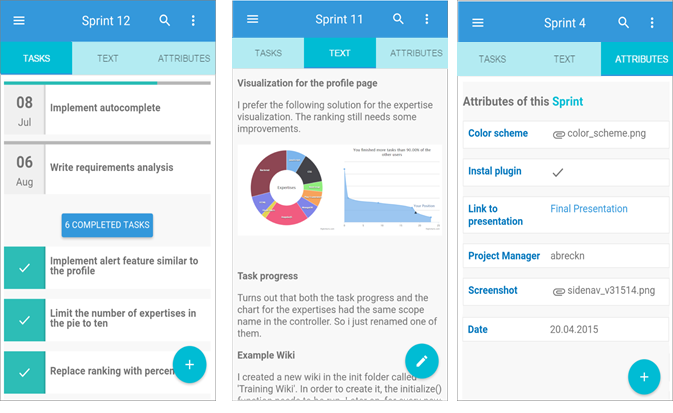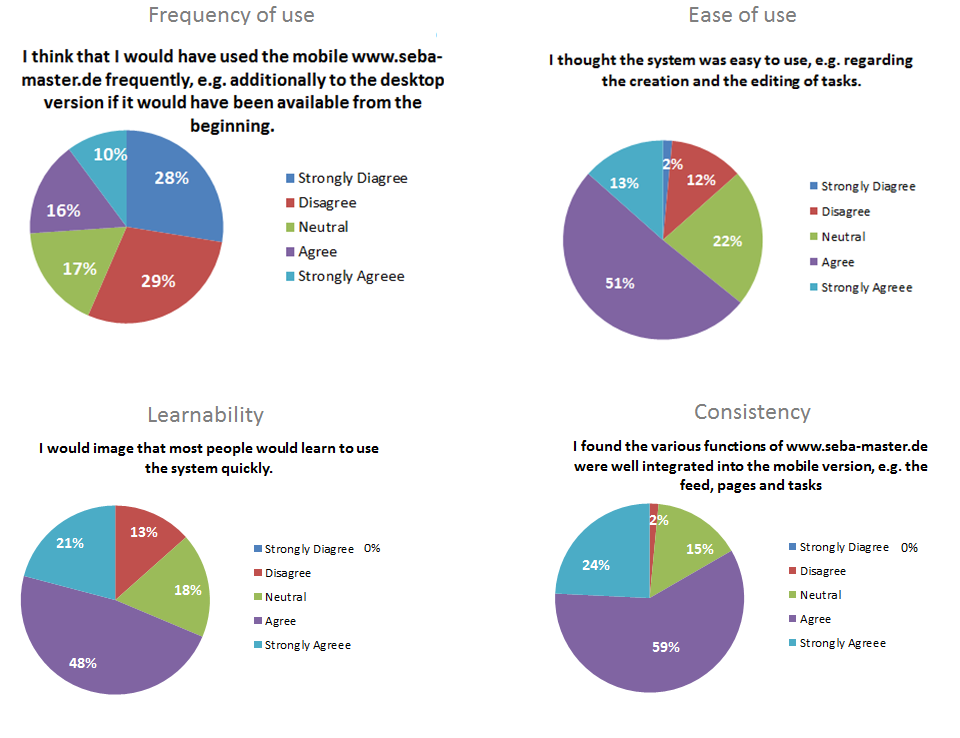The expanding role of knowledge in today’s information-based economy has led businesses to increase their focus on process related work. Modelling processes of knowledge artifacts within so called knowledge-intensive processes (KIPs) became an essential task for organizations. KIPs comprise activities such as building, sharing and reuse of knowledge as well as the collaboration and cooperation of workers. However, KIPs take hold of an unpredictable and dynamic nature and are characterized by high variability and changeability. These factors establish the need so support such processes with appropriate methods. To facilitate the structuring of knowledge-intensive processes a large variety of supportive tools has emerged in recent years. Especially with advances in mobile technology the necessity to support knowledge work through mobile devices has increased. Businesses are increasingly incorporating mobile technologies for communication and collaboration purposes. Nonetheless, mobile applications need to meet different usability requirements than web applications. Usage contexts and interaction methods differ from those of desktop websites. To provide a successful user experience several key aspects such
as available mobile technologies, compatibility and the selection of essential information to be displayed need to be further investigated.
In this work, a mobile web application for collaborative structuring of knowledge-intensive processes is designed and implemented. Thereby, a mobile tailored version of the existing web application Darwin is developed. Best practices and usability requirements towards mobile applications are gathered and integrated. Furthermore, an evaluation of the developed mobile solution regarding usability aspects such as perceived user satisfaction, efficiency and ease of use is conducted. Revised design solutions based on the evaluation results are then incorporated into the iterative design process.
For the implementation of the user interface the concepts of Material Design are applied by using Angular Material as frontend framework. The guidelines of Material Design aim to to specify a natural interaction between the user and the system.
The main components of the mobile web application are the feed, the wiki pages and the profile page. The feed displays the recent activities of the users. Feed entries can be of the types discussion, task and data. The filter allows users to refine the entries according to type.

The content of wiki pages is structured in a tab format. Tasks ,attributes and text are each displayed in a single tab. Each tab has a specific iconr related to its content. The currently selected tab is highlighted with a darker color. Users can switch between tabs by swiping.

The profile page also applies a tab view to structure its content. The components of the profile are closed tasks, open tasks and user expertises. On top of the profile page the profile picture is displayed. Around the picture a chart can be seen which represents the percentile ranking of the user. The expertise overview shows how many tasks the user has finished for each expertise

Architecture of the Mobile Application
The application resides in a client-server architecture. On the server side we have controllers with the core functionalities of the applications and the models for manipualting and retrieving data from the datastorage. The REST API is used as request-response mechanism between client and server. The client side implements the Model-View-Controller pattern with AngularJS and Angular Material as frontend framework. Mobile and desktop client are seperated, so that the user gets redirected to the corresponding version according to the access device.
The developed mobile web application was evaluated in the early development stages to identify usability issues and apply adaptions is needed. Thereby, the system was tested with 69 students of a web application course of the Sebis chair. The students were asked to perform five predefined tasks and thereby express their impressions and thoughts about the system. After the task completion users filled in a 10 item SUS questionnaire. They stated how much they agreed or diasagreed with the statements in the questionnaire.
The results of the questionnaire are divided into the four aspects frequency of use, ease of use, consistency and learnability. The charts below illustrate the reponse answers of the participants regarding these four aspects. The application received an overall SUS score of 67.57.

The results from the empirical evaluation show that certain parts of the mobile website need to be refined to improve the overall usability. The observations of the Think-Aloud protocol help to interpret the results of the questionnaire. The SUS score indicates that the usability of the system received an average rating from the users.
Exemplary user interface design adaptions are seen in the images below. The images on the left side show the system prior to the adaption, the images on the right side show the implemented changes in the system.
Claudio Di Ciccio, Andrea Marrella, and Alessandro Russo. Knowledge-intensive processes: Characteristics, requirements and analysis of contemporary approaches. Journal on Data Semantics, 4(1):29–57, 2014.
Matheus Hauder, Rick Kazman, and Florian Matthes. Empowering end-users to collaboratively structure processes for knowledge work. In Business Information Systems, pages 207–219. Springer, 2015.
Nielsen, Jakob, and Raluca Budiu. Mobile usability. MITP-Verlags GmbH & Co. KG, 2013.
Neil, Theresa. Mobile Design Pattern Gallery: UI Patterns for Smartphone Apps. " O'Reilly Media, Inc.", 2014.
Fling, Brian. Mobile Design and Development: Practical concepts and techniques for creating mobile sites and web apps. " O'Reilly Media, Inc.", 2009.
Krannich, Dennis. Mobile System Design: Herausforderungen, Anforderungen und Lösungsansätze für Design, Implementierung und Usability-Testing Mobiler Systeme. BoD–Books on Demand, 2013.
Bernhaupt, Regina, Kristijan Mihalic, and Marianna Obrist. "Usability evaluation methods for mobile applications." Handbook Res User Interface Des Evaluation for Mobile Technology 44 (2008): 745-758.